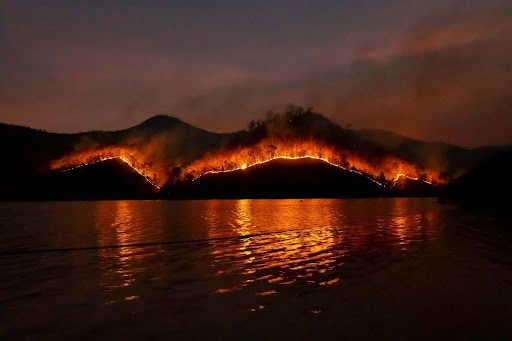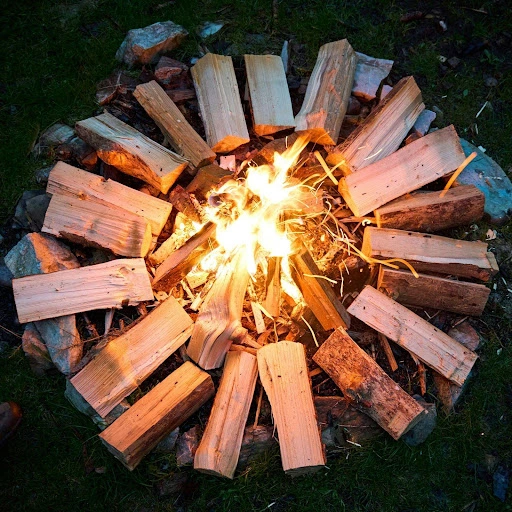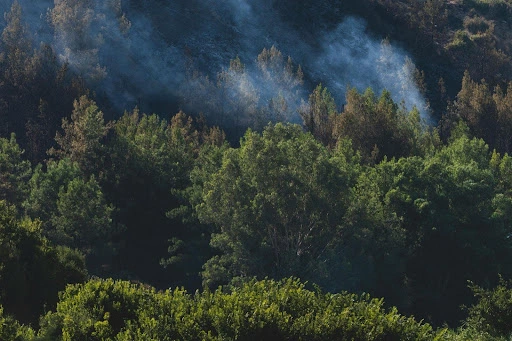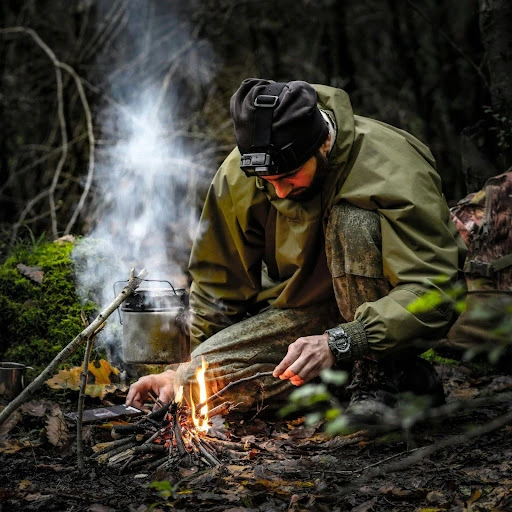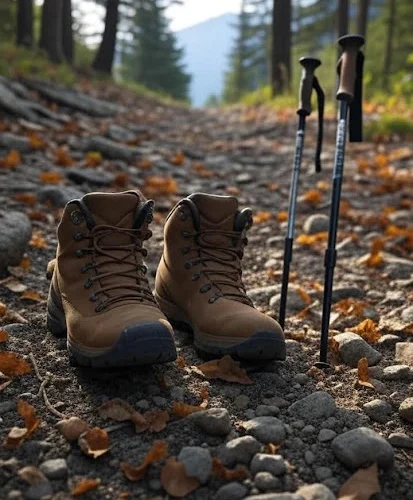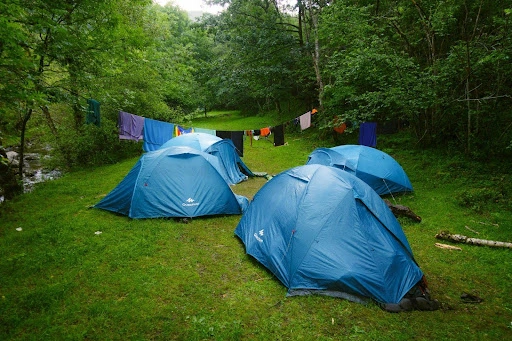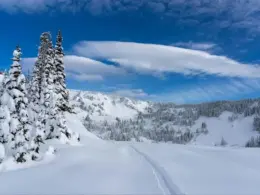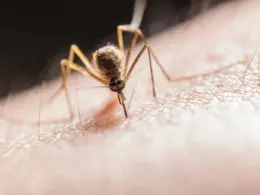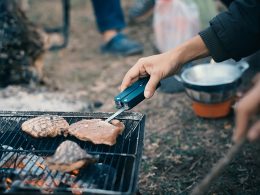Campfires are a staple of any outdoor experience. They’re the heart of any camping trip, bringing folks together for stories, s’mores and a bit of warmth against the night chill. We often associate it with companionship and connecting with our souls.
But there’s also a harsh reality that goes along with it: a single stray spark or poorly doused campfire can ignite a wildfire that ravages acres of wilderness. With drier conditions being the norm during the summer months, being mindful about your fire isn’t just good etiquette, it’s essential for keeping the outdoors safe for everyone. This guide will get you started with campfire safety, highlighting ways to prevent forest fires, including sneaky threats like root fires that lurk underground.
Table of Contents
Picking the Right Spot: Start with a Solid Foundation
Before you even light a match, where you set up your fire matters big time. The wrong location increases the risk of flames jumping to nearby brush or trees. Always look for designated fire rings or pits at established campsites – these are built to contain heat and embers. If you’re in the backcountry without one, clear a spot at least 10 feet across, scraping away grass, leaves and twigs down to bare soil. Surround it with rocks to form a barrier, but skip river rocks; they can explode from trapped moisture when heated.
Why bother? Wind can carry sparks far and dry undergrowth catches quickly. In areas with heavy duff, that thick layer of decomposing needles and leaves on the forest floor, a fire can burrow in and spread unseen. Duff fires smolder slowly, often going unnoticed until they flare up hours, even days later. Check local regulations too; many parks ban fires during high-risk seasons or require permits. Ignoring burn bans isn’t really a worthy risk, in my opinion – it’s often illegal and can lead to big fines.
Keep your Fire Small and Manageable
Size matters when it comes to campfires. A big bonfire might look cool, but it’s a recipe for disaster. Stick to a small fire, no bigger than a couple feet wide and high, using only wrist-thick sticks. Collect dead, downed wood from the ground – never snap branches off living trees, as that harms the ecosystem and green wood smokes like crazy anyway.
Fuel choice is key to prevention. Dry hardwood burns cleaner and hotter with fewer sparks than softwoods like pine, which pop and send embers flying. Avoid trash or treated lumber; they release toxic fumes and can leave hot spots that linger. And here’s a big tip: build your fire in stages. Start with tinder (dry grass or bark), add kindling (small twigs), then larger logs. This controlled approach keeps things in check and reduces the chance of uncontrolled spread.
But what about those hidden dangers? Root fires are a sneaky one. They happen when heat travels through the soil to tree roots, igniting them underground. These can burn for days, undetected, until they surface and ignite above-ground fuels. To dodge this, avoid building fires near large trees or exposed roots. If the ground feels spongy or organic-rich, that’s a red flag for potential root or duff ignition. In peaty soils, common in wetlands or northern forests, fires can tunnel deep and resurface far away.
Tending the Flames is Truly An Art
Once lit, a campfire demands constant attention. Never leave it unattended for long periods of time. Gusts can whip up embers in seconds. Keep a bucket of water, shovel, and dirt nearby for quick control. Stir the coals occasionally to ensure even burning, but don’t poke it too much; that just scatters hot bits.
Wind is a major wildcard. If it’s picking up, douse the fire early. Sparks can travel hundreds of feet, landing in dry leaves or tents. Set up a windbreak if needed, but better yet, skip the fire on blustery days. And flammable stuff? Keep it far, tents, gear, gas cans, even your chair, at least 10 feet away. Kids and pets add another layer; supervise them closely to prevent accidents.
Other overlooked risks include overhead hazards. Low branches or dead snags can catch fire from rising heat, dropping embers back down. In wildfire-prone areas, be extra vigilant during red flag warnings: low humidity and high winds.
Putting It Out: The Douse, Stir, and Feel Method
Extinguishing a campfire properly is where many folks slip up. Don’t just kick dirt over it—that can trap heat and let it reignite later. Instead, follow the tried-and-true method: douse with water until it hisses no more, stir the ashes to expose hidden embers, then douse again. Feel the remains with the back of your hand; if it’s cool to the touch, you’re good. This might take a gallon or two of water, so plan ahead.
For root and duff fires, extra caution is key. Soak the ground around the fire pit, probing with a stick to check for hot spots. In dry seasons, these underground smolderers have caused massive blazes where roots carried fire miles away. To do a bit extra, scatter cold ashes over a wide area to avoid concentrated heat.
Extra Precautions and Alternatives: Gear Up for Safety
Beyond the basics, smart gear helps. A fire blanket can smother small ember escapes, while a spark screen over the pit catches flyaways. Portable fire pans or elevated grills lift flames off the ground, minimizing soil contact and root fire risks.
Know the signs of trouble: smoke rising from the ground post-extinguish means a duff or root issue—dig it up and drown it. In bear country, proper food storage ties in, as unattended fires attract wildlife that could knock things over.
Sometimes, the best prevention is skipping the campfire altogether. Propane stoves or lanterns provide heat and cooking without open flames, especially in restricted zones. They’re lighter on the environment too, aligning with Leave No Trace principles.
Your Campfire Safety Checklist
To wrap this up practically, here’s a quick rundown to reference before lighting up:
- Check for burn bans and weather alerts via apps or ranger stations.
- Use established fire rings or clear a 10-foot diameter area to mineral soil.
- Keep fire small, using only dead wood—no green or trash.
- Have water, shovel, and dirt ready; never leave the fire alone.
- Clear 10 feet around of flammables, avoiding roots and overhead branches.
- Extinguish by drowning, stirring, and feeling for heat—repeat until cold.
- Watch for duff or root smolders; soak the ground if needed.
- Consider stove alternatives in high-risk areas.
Final Thoughts
Campfires bring magic to the outdoors, but mishandling them can strip that away in a flash. By choosing spots wisely, building modestly, tending diligently, and extinguishing thoroughly, you cut the odds of sparking a forest fire dramatically. Pay special attention to those hidden threats like root and duff fires—they’re the silent spreaders that turn minor oversights into major disasters. Stay informed, stay prepared, and you’ll keep the wilderness welcoming for trips to come.

